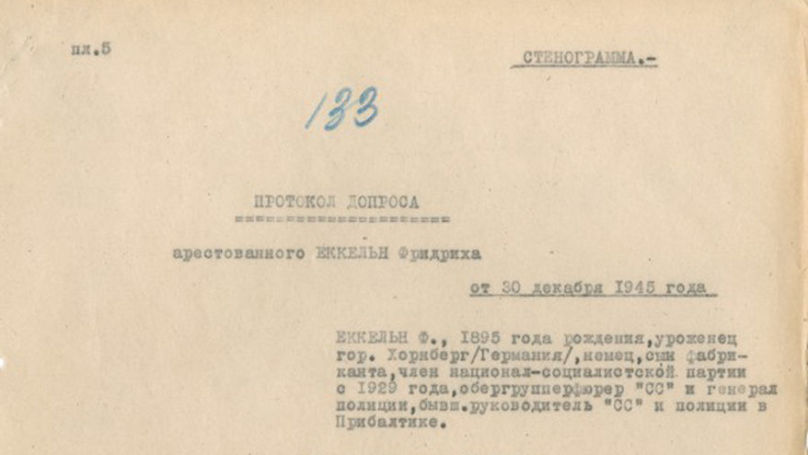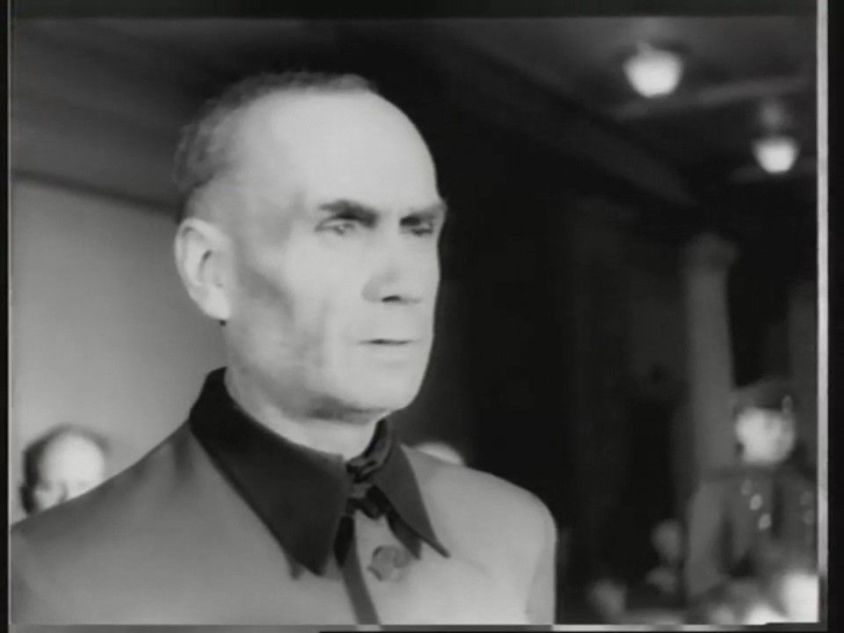Yuriyus Traksyalis, Head of the Lithuanian Military Heritage Institute (Vilnius, Lithuania), talks about the crimes of the occupants in the Baltic Republics and provides details about the Riga Trial.
Overall, seventeen open trials of war criminals were held in the Soviet Union from 1945 to 1947, in which 221 people were convicted.
In the Lithuanian SSR from 1944 to 1948 many war criminals who failed to retreat with the bulk of the occupying military units were caught and convicted. Among them were the head of the concentration camp for the families of Red Army officers, the the head of the Kauen-Schanzen concentration camp, the inspector of the fascist newspaper . In 1946, Major General Emil Just, the commandant of security of the Lithuanian region who had been caught in Berlin was sentenced to death in Vilnius. Some of the criminal cases against war criminals who committed atrocities in the Baltics were later transferred to the Moscow Region, Belarus, and other areas.
The defendants in the Riga trial from 26 January to 2 February were closely and directly related to many of the Nazi leaders sitting in the dock in Nuremberg, and it’s for this reason that a number of historians refer to the Riga trial the “Soviet Nuremberg”.

The process was well prepared both legally and factually. This was required by the Nuremberg trial in whose wake the Riga trial took place. Soviet investigators carefully studied the materials of the Ostland Reichskommissariat, all of them were left by the Nazis in Riga. Their exemplary meticulousness is evidenced in particular by the most detailed survey reports attached to each volume, and the array of other collections of documents concerning the territory known as Ostland. All of this along with witness testimony and information from the Extraordinary State Commission for Investigation of the Atrocities of the German-Fascist Invaders were involved in the evidence base of the Riga trial. The trial showed the instruments of torture the fascist executioners used on their victims, and their sadistic mockery of innocent children, women, and the elderly.
The court established the size of the material damage caused by the occupation. Generals Jeckeln, Ruff, Monteton, Küpper, and other defendants talked about the "dead wounds" that were created by burning hundreds of settlements. The evidence was irrefutable, they could do nothing but admit the export of industrial equipment, works of art, looting of churches, and monasteries in the Baltic States.
The most terrible crimes were committed by Friedrich Jeckeln, Obergruppenfuehrer of the SS, Police General. It was proven that Jeckeln stood at the head of the mass extermination of Jews, Roma, and Soviet prisoners of war. He invented his own method of mass murder, whereby people were stripped naked and buried alive in graves. This method is known in history as the "Jeckeln System".
At Himmler and Kaltenbrunner’s orders, Jeckeln organised the assassination of the Orthodox Metropolitan Sergius. In December 1944, Jeckeln ordered the execution of 160 civilians in the Latvian village of Zlekas. From March 1945 on he was the commander of the SS troops in the Frankfurt area. He was captured by Soviet troops in Berlin on 2 May 1945.
This man organised three of the most brutal massacres in the entire history of World War II: in Kamyanets-Podolsk, Babi Yar (Kiev), and the Rumbula forest (Latvia). In February-April 1943, Jeckeln led the punitive anti-partisan operation "Winter Magic" in northern Belarus. During the operation, Latvian, Lithuanian, and Ukrainian collaborators shot and burned several thousand civilians, more than 10,000 were taken to work in Germany.
Source:
The record of interrogation for the defendant Friedrich Jeckeln, Obergruppenführer of the SS, Police General, Former Chief Executive of the SS and the Baltic Police, 30 December 1945.
The Central Archive of the Federal Security Services of the Russian Federation F. C-72. Series 1. I. 17. Pp. 133-140.
























